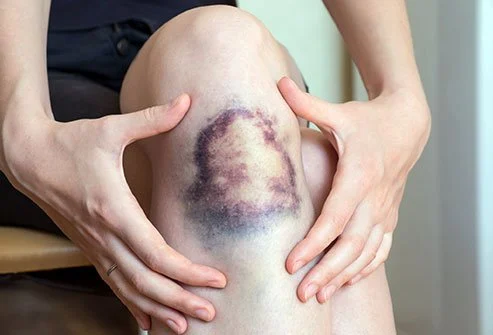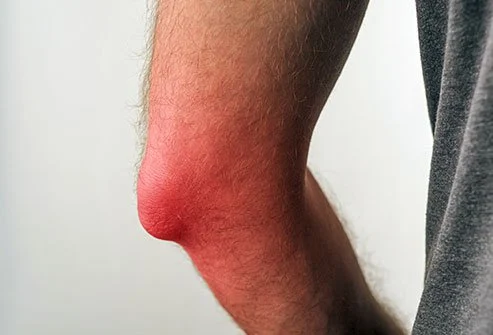THE SOFT TISSUE SERIES - PART 1
What is Soft Tissue and how do they get injured?
The 4 stages of Recovery
What factors effect Recovery?
Active or inactive, everybody is at risk of suffering a soft tissue injury! I often hear in the clinic, " I'd been totally find and I just .... and I felt a ping, pop, tear etc".... often ending this with a significant amount of pain, swelling and reduced range of movement!
A little pain in the ???? they are injuries which can be a frustrating and difficult issue to heal and recover from. At their most serious they can take months even years to recover from and may result in a loss of performance, re injury and even retirement from your chosen sport/activity/occupation!!
However, if carefully managed many injuries have a good prognosis and outcome, resulting in a successful recovery and rehabilitation.
What are Soft Tissue Injuries?
Soft Tissues are found throughout the body and comprise of many types. This includes fat, muscle, fibrous tissue, blood vessels, lymph vessels and nerve. Together they surround, support and connect organs and other tissues in the body, giving shape to the body, move fluids, protect organs and store energy.
Soft tissue injuries are the result of damage to the muscles, ligaments and tendons, resulting in –
• Contusions (Bruising)
Injury to soft tissue often produced by a blunt force such as a kick, fall or blow, resulting in pain, swelling and discolouration due to bleeding into tissue.
• Sprains
Injury caused by partial tear to a ligament and often caused by a wrench or twist, generally affecting ankles, knees, or wrists.
• Tendonitis
Injury caused by inflammation of the tendons, generally due to overuse in the affected area from repetitive motion, commonly affecting elbow, hand, wrist, shoulder, hip, knee, ankle and foot.
• Bursitis
Injury caused by the inflammation of the bursa, the fluid filled sac that provides a cushion between bones, muscles, or tendons. Caused by an overuse injury but also via direct trauma to a joint. Commonly affects the shoulder, elbow, knee, hip, ankle and foot.
• Strains
Injury caused by a strain to a muscle or tendon often caused by overuse, force or stretching, could lead much more significant tear injury.
Picture left to right - Ankle sprain, Knee contusion, Achilles Tendonitis, Elbow Bursitis & Calf strain/tear.
THE 4 STAGES OF SOFT TISSUE RECOVERY
ACUTE STAGE | Protection phase
A soft tissue injury is in the acute stage from the initial injury and while the pain, bleeding and swelling is at its worst. Inflammation occurs at the injury site, resulting in pain, swelling, heat, redness, and a reduction in the range of motion. The body’s aim at this point is to protect the injury from further damage. The time frame for this stage is about two to seven days for the acute symptoms to settle.
Aims of Treatment
The aims of treating soft tissue injuries in their acute stage is to help control inflammation and pain and if not contraindicated maintain mobility.
Protocol of Treatment
During the acute phase, the P.E.A.C.E protocol should be undertaken.
PROTECT – Protect your injury from further damage, until it can be evaluated - REST!
ELEVATE – Elevate the injured or sore area above the level of your heart while applying ice will reduce swelling.
AVOID - anti-inflammatories and ICE as this can reduce tissue healing
COMPRESSION– Using an elasticated bandage or tubular bandage to help limit swelling and movement.
EDUCATION - seek professional advice on the next steps (Sports Therapist, Physiotherapist &/or GP)
Depending on the injury medical assistance should be sought as soon as possible to determine the full extent of the injury and whether there are any further complications.
In the Acute stage of injury the following is contraindicated and could cause further tissue damage.
• Heat – will increase blood flow, which may increase swelling.
• Alcohol – can increase bleeding and swelling to the injured area
• Exercise – may cause further damage
Outcome of treatment
The hopeful outcome of the treatment during the acute phase is to reduce inflammation, reduce swelling and reduce pain. This will lead to a better recovery and move into the next stage, reducing scar tissue formation, improved mobility, and improved healing. After 2 to 3 days the bleeding should stop and new capillary blood vessels start to form.
STAGE 2: SUB ACUTE PHASE | Repair phase
A soft tissue injury is termed sub-acute when the initial acute phase makes a transition to repairing the injured tissues. The phase can last up to approximately 6 weeks post injury, where the body is creating new soft tissue and reducing the need to protect your injury as the new scar tissue begins to mature and strengthen.
Aim of treatment
During this stage the aim of treatment is to introduce movement and mobility to the injury, restoring strength, improving blood flow to damaged tissues, minimise scar formation, restore neurological function and reduce pain.
Treatment protocol
During the Sub-Acute phase, the following L.O.V.E and the M&M treatment protocol should be undertaken
• LOAD – Injury should undergo optimal loading and progressive protocol without increasing pain to promote repair and remodelling of tissues. This also builds tissue tolerance and restores strength.
• OPTIMISM – To support the psychological factors of injury, to prevent barriers such as depression, fear, low mood, demotivation etc influencing the outcomes and prognosis of injury.
• VASCULARISATION - research shows increasing blood flow and nutrients to the area can improve healing and decrease recovery time. This can be through massage, use of heat therapy and movement, including some cardiovascular exercise.
• EXERCISE – using a specific movement protocol through mobilisation techniques, stretching, movement, muscle energy techniques and exercise to restore mobility and strength to injury.
MASSAGE – increases circulation, improving healing and supporting optimal scar tissue formation in reducing likelihood of adhesion formation.
MOBILISATION techniques – can be Passive (moved by therapist assistance), Active Assisted (client actively moves affected limbs with external aid/support) and Active (client moves affected area using non weight bearing exercise).
If inflammation continues throughout this phase, heat therapy (ICE/COLD) can be used alongside use of Non Steroidal Anti Inflammatory (NSAIDs) to reduce pain and swelling.
Outcome of treatment
The desired outcome of treatment is to support the healing and manipulation of the collagen fibres repairing the injury to optimise scar tissue formation, improve healing, restore function and continue to reduce pain.
STAGE 3: CHRONIC PHASE | Remodelling phase
About 6 weeks post injury, healing remains on a continuum. The healing tissues are less fragile and are reasonably mature. However, when stretched, strengthened and under stress the new scar tissue is still not strong enough to undertake increasing physical demand and full load. During this phase the body’s aim is to stimulate further development of new tissue to strengthen and support the healing tissues until it meets the demands of the normal exercise or physical function of the patient. This period is between 6 weeks and 3 months.
Aims of Treatment
The aims of treatment through this period is to restore functional capabilities of the soft tissues, facilitate the maturation of collagen, reduce adhesions, regain and improve mobility and flexibility and regain strength to facilitate the injured area to its sports specific function.
Protocol of Treatment
A variety of techniques can to applied to focus on progression back to pre injury level. This includes –
• MASSAGE – increases circulation, improving healing and supporting optimal scar tissue formation in reducing likelihood of adhesion formation.
• STRETCHING TECHNIQUES – a range of passive, active assisted and active stretching can support regain mobility and range of movement to the affected limbs, both the injured and compensatory. This can also include the use of muscle energy techniques.
• PROPRIOCEPTIVE NEUROMUSCULAR FACILIATION (PNF) – utilised to improve and facilitate muscle elasticity and range of motion.
• SOFT TISSUE RELEASE – Can be used on both acute and chronic injuries, breaking down adhesions and improving blood flow to the area to re-establish optimal length, reliance and function of muscles.
• HEAT – the application of heat to increase the temperature of the skin/soft tissue and induce vasodilation. This increases oxygen uptake and accelerates tissue healing. Use of hot packs, saunas, heat wraps, steam rooms and baths.
• FUNCTIONAL/SPORT SPECIFIC REHABILITATION – this will include specific exercises and movements to restore function to the injured area, strengthen it to it former pre-injury state and maintain wellbeing for the patient. Exercises will include movements to strengthen (Static and Concentric exercises), promote endurance, restore flexibility and improve balance and coordination.
• FRICTIONS – Localised manipulations performed on and around the injured area to loosen adhesions, improve movement, promote healing, and reduce scarring.
• NUTRITION – correct nutrition to help repair soft tissues and reduce inflammation in the tissues.
Outcome of treatment
The desired outcome of treatment during the chronic phase to promote optimal healing of the injured site and regain pre-injury function to the area through carefully managed rehabilitation, exercise and manual therapies. This allows the patient to get back to their sport/activities at their full capacity.
STAGE 4: FINAL | Ongoing repair and Remodelling
Dependent on the final stages of tissue repair and the injury itself this can last from 3 to 12 months. Scar tissue requires time to suitably align and gain tensile strength needed for the forces placed on these tissues.
Aim of treatment
This phase requires treatment to focus on improving the quality of new tissue and prevent re-injury.
Treatment Protocol
Treatment will be sport and activity specific to prepare the injured area for the demands placed on this area. This will also be specific to address any dysfunction or compensatory issues which has arisen during the healing phase of the injury. A key component of this will be manual therapy, rehabilitation exercises/plan and client education on preventing re-injury.
Outcome of treatment
The desired outcome of treatment will be to restore function to the injured limb, to prevent re-injury, restore strength and allow the patient to return to the sport or activity at full function.
Factors which influence Soft Tissue healing
The following will influence the quality and time taken for the soft tissue injury to heal –
• Severity of the injury and the degree of tissue damage
• Cessation of activity – immediately stopped or kept playing/training
• Rest and Recovery time allowed
• Timing and treatment provided to assist healing
• Diet and nutrition
• Medication
• Staged recovery movement program and specific rehabilitation
• Client motivation, psychology and mindset
• Age of patient
• Health status
How can Huquine Sports Therapy help?
Here at Huquine Sports therapy we can support you with soft tissue injuries through all the stages - through treatment, advice and rehabilitation support to restore balance, strength and stability! Let us guide you in getting you back to what you love safely, effectively and stronger than eH











Comments